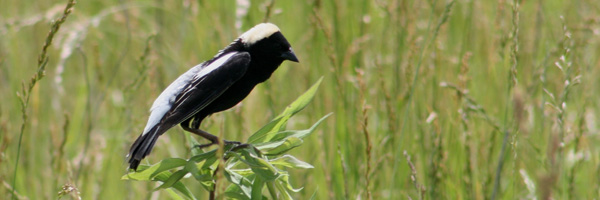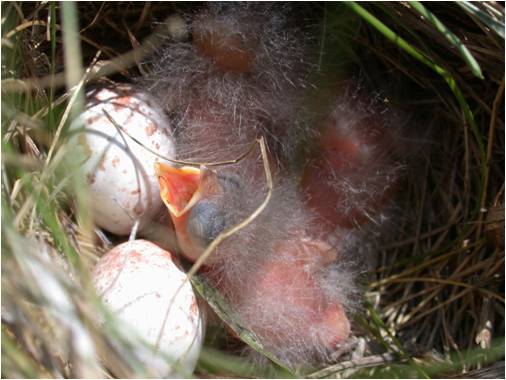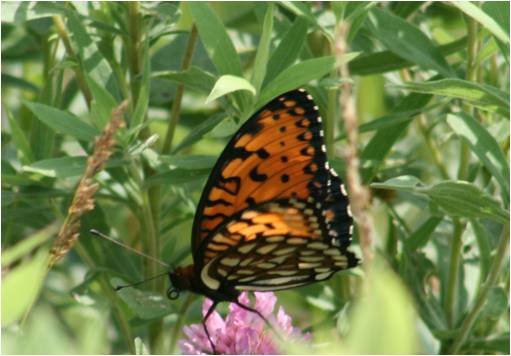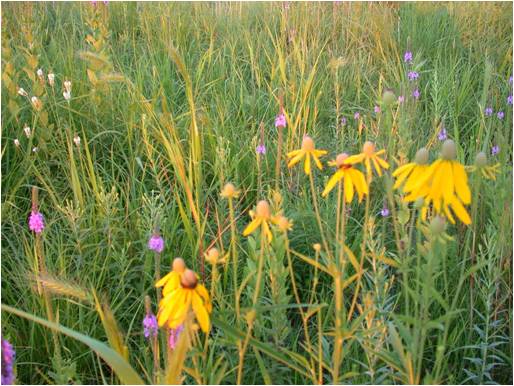
ECOLOGY & CONSERVATION BIOLOGY
IN THE MILLER LAB

ECOLOGY & CONSERVATION BIOLOGY
IN THE MILLER LAB
Contact: Tracy Walker, Jim Miller



Since European settlement, grasslands in the central U.S. have been greatly reduced in area and degraded by human activities. Approximately 99.9% of native prairie in Iowa, for example, has been converted to cropland and other human uses. Given this broad-scale habitat conversion, it is not surprising that grassland birds have experienced greater declines than any other avian group in North America. Similarly, numerous prairie-obligate butterfly species once thought to have been common in native grasslands have been greatly reduced in abundance and now are patchily distributed. These alarming trends have motivated prairie preservation and restoration efforts on the part of federal, state, and county agencies, as well as non-governmental organizations. In Iowa, the most intensive and wide-scale restoration activities have been focused on the Loess Hills in the western part of the state. The Loess Hills are an internationally unique landform created over 12,000 years ago from wind-blown loess deposits. Historically, the hills were dominated by mixed and tallgrass prairies in the uplands, with woodland plant communities in valleys and ravines. Since settlement, the prairies have been reduced to <5% of their former extent through conversion to agricultural uses and the spread of woody vegetation due to fire suppression. In an effort to reverse this trend, nearly 3000 ha of grassland and woodland are being burned or mechanically treated annually in the hills. We initiated this research in 2003 to gauge the effectiveness of these restoration efforts. The project focused on The Nature Conservancy’s Broken Kettle Grassland Preserve and surrounding private lands near the northern terminus of the hills. Broken Kettle is that state’s largest contiguous prairie and these properties collectively total >1800 ha. Here we established 57 50m-radius plots among 4 treatment types: areas that were only burned, areas that were only grazed, areas that were burned (prior to 2001) and grazed (n=14), and areas that were burned (since 2001) and grazed (n=13). We surveyed breeding birds at each plot in 2003 and again in 2004 using point counts, and nest searches were conducted on a subset of plots in both years. We also measured a variety of vegetation features in each plot in each year. Butterflies were surveyed on the plots in 2004 and 2005 by Dr. Diane Debinski and her students, and additional vegetation characteristics were measured.
Collaborators: Dr. Lars Brudvig, Dr. Diane Debinski, Dr. Rolf Koford, Dr. Cathy McMullen, Jennifer Vogel
Publications:
Brudvig, L., C.M. McMullen, J. R. Miller, and T.A. Walker. 2007. Evaluation of central North American prairie management based on species diversity, lifeform, and individual species metrics. Conservation Biology 21:864-874. (pdf)
Vogel, J.A., D.M. Debinski, R.R. Koford, and J.R. Miller. 2007. Grassland butterfly responses to prairie restoration through fire and grazing. Biological Conservation 140:78-90. (pdf)
Miller, J.R. 2006. Restoration, reconciliation, and reconnecting with nature. Biological Conservation 127:356-361. (pdf)
Funding: Iowa Department of Natural Resources
